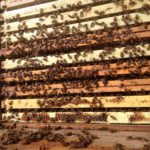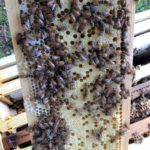After a few updates with the Honey Bee hive I am amused by them daily and enjoy watching them come and go, throughout the day. A few things I have discovered from backyard beekeeping, as a total novice, with no real experience with it:
- The Honey Bee Hive is pretty mellow. I can cut grass right next to it, no issues. I just mow right past them, quickly, with no issues.
- They don’t bother my dogs. Our pug and boston terrier roam around the backyard and go near the hive, no issues. We monitor them when they are in the back, but no crazy issues so far.
- The Honey Bee’s don’t bother us our inhibit our enjoyment of the backyard
Below is a copy/paste from Ruth, our honeybee keeper:
“I checked in on your hive yesterday to ensure that the new queen has been accepted by the hive, and she has, which is great. That means your colony is now considered “queen-right.” It is an expression beekeeper’s use to indicate that there is a queen in the hive, she has been accepted, and she is laying well. Here is a picture with a shot of the queen bee:

Queens can be identified by their long, tapered back end, which they use to deposit the eggs into the center bottom of the cells. If you had a chance to look at the comb I left for you, you may have seen the tiny, rice-like, eggs standing upright in the center of the comb. These eggs grow for three days before they hatch into larva (little white worm-like curls in the bottom of the cell), then later, once the worker bees have put a wax cap on the cell, the larva spins a web around itself (just like a caterpillar) at which point we call it a pupa and finally it chews its way out of the cell as a new born bee. (This is yet another reason the “birds and the bees” metaphor is a bit confusing.)
Anyway, the full bee reproductive cycle is well underway in your hive, which is what we want. Remember that a summer worker bee only lives 3-6 weeks, so to keep the hive full, the queen must lay more than enough eggs to make the replacement bees, and before the summer solstice, she wants to increase the population of the hive to take advantage of the nectar that is available this time of year.
This is what I saw on the top box of the hive when I opened it. You will see the little wooden box with a hole in the top. That is the queen cage that the queen successfully emerged from, so I have now discarded it.
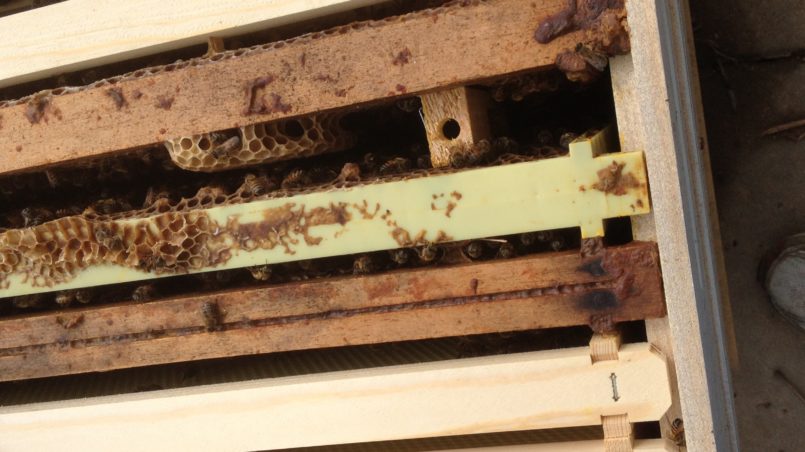
To make space for the queen cage, I had to remove a “frame,” which is the wooden edged comb base. This throws the spacing of the hive off, and so, the bees felt the need to build new comb in the gaps.
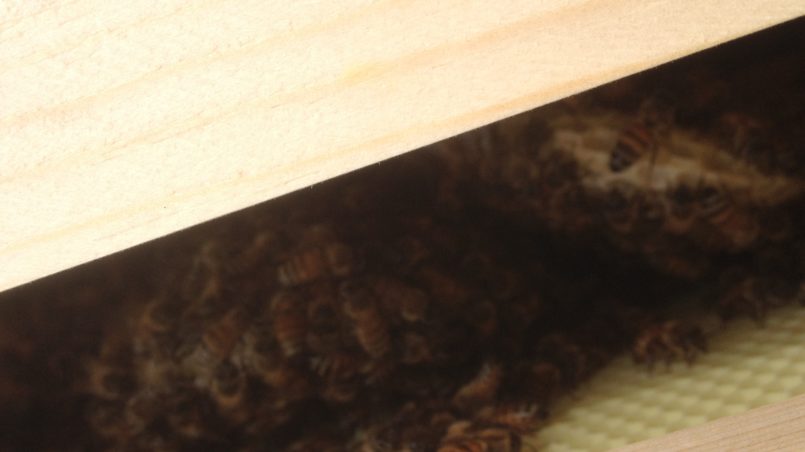
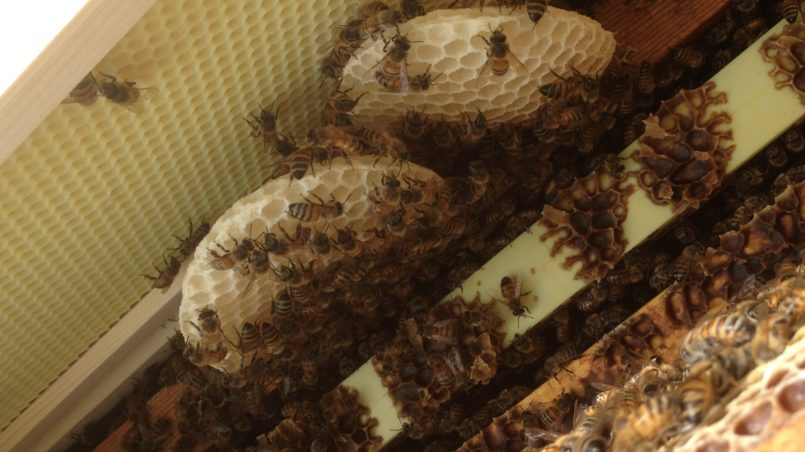
That is the comb I cut out and left for you, because I had to put the old frame back in that spot.
This is the frame that I pulled out with bees on it.
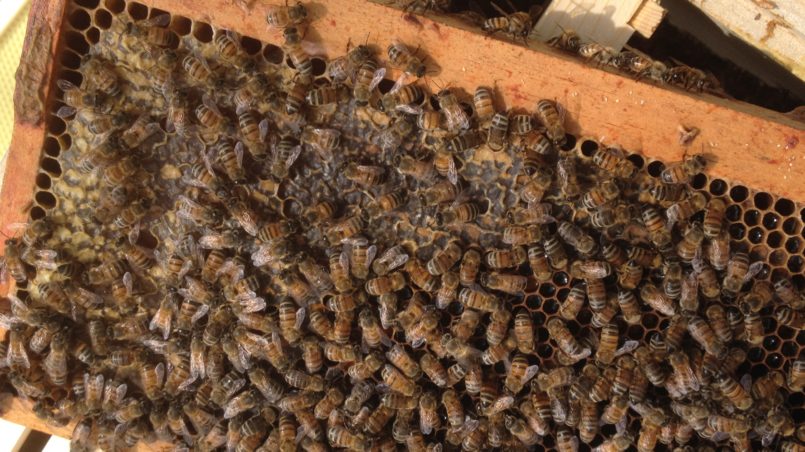
You can see some of the nectar glistening in the cells to the left, and the cells that look dark and sealed off contains honey. This is a better shot of the nectar.
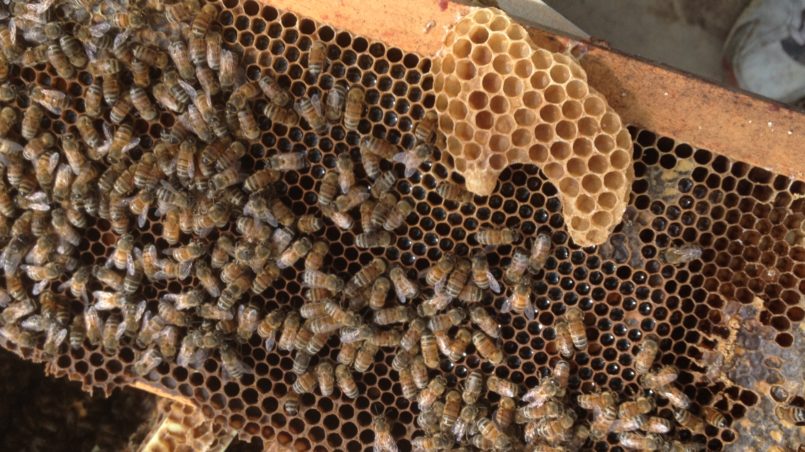
So basically, honey is dehydrated flower nectar, with some pollen, and some bee enzymes mixed in to keep it from spoiling. ”
That’s our update from Ruth! I am super excited with the progress and overall honey bee keeping adventures so far 🙂


